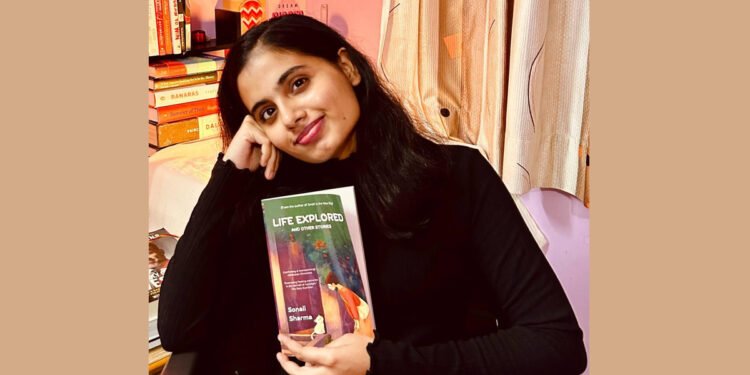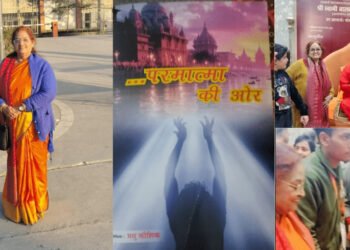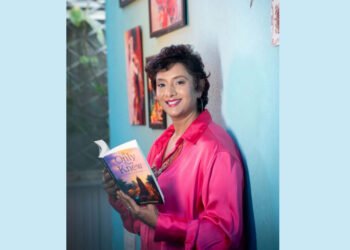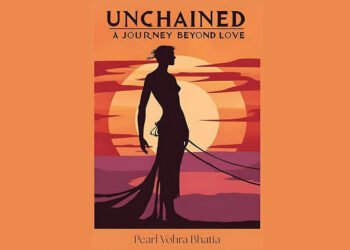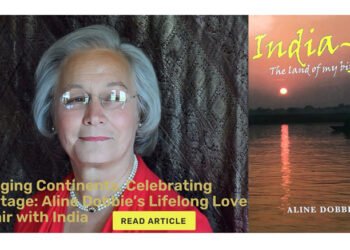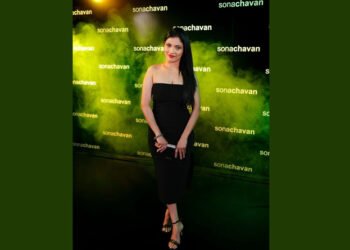In this riveting interview with Sonali Sharma, a 2X author and an entrepreneur, we explore the gist of her journey as she shares her insights on the writing process, inspiration behind the stories and how literature has the power to impact the people and the society as a whole. The times have changed and so has the literature witnessed the transformation of the voices.
Q1: Your collection “Life Explored and Other Stories” dives deep into human emotions and vulnerability. What inspired you to focus on these themes in your writing?
I’ve always believed that beneath our carefully constructed facades lies our most authentic selves. Growing up, I noticed how people, especially in Indian society, often hide their true emotions behind social expectations. My writing became a way to peel back these layers. I was inspired by the quiet moments of truth I witnessed during observations. I believe these unfiltered emotional experiences contain universal truths that connect us all, regardless of our differences. Vulnerability isn’t weakness; it’s our most powerful connection to humanity.
Q2: The nostalgia in your work resonates deeply with readers. How do you capture those bittersweet memories in a way that feels universal?
Nostalgia isn’t just about remembering the past,it’s about how the past continues to live within us. I focus on sensory details that trigger emotional memories-the scent of rain-soaked earth, the particular quality of afternoon light in a childhood kitchen, the sound of a grandmother’s bangles. These sensory anchors connect readers to their own memories. I also explore how nostalgia itself changes with time and perspective. The same memory can bring comfort in one season of life and pain in another. That shifting relationship with our past is something we all experience, regardless of cultural background.
Q3: How would you describe the current landscape for women writers in India’s literary scene?
It’s an exciting time of transformation. More women are being published across genres, and there’s growing recognition for women’s voices from diverse backgrounds and languages. However, challenges remain. Women writers are still often categorized as writing ‘women’s fiction’ even when addressing universal themes, while male authors writing about family or relationships are celebrated for their ‘insightful’ exploration of the human condition. The good news is that readers are hungry for authentic feminine perspectives, and digital platforms have democratized publishing, allowing more women to share their stories without traditional gatekeepers.
Q4: What stereotypes or expectations have you encountered as a female author focusing on emotional narratives?
There’s this persistent idea that stories centered on emotions and relationships are somehow less serious or important than ‘big idea’ narratives. I’ve had reviewers describe my work as ‘domestic fiction’ or ‘women’s stories’ in ways that felt diminishing. There’s also pressure to present female characters who are either flawlessly strong or acceptably vulnerable in ways that don’t threaten established norms. When my female characters express rage or make morally complex choices, some readers find it uncomfortable. I’ve learned to embrace that discomfort-it’s often a sign that the work is challenging necessary conversations.
Q5: How do you think modern Indian literature is evolving in its portrayal of women’s experiences?
We’re witnessing a remarkable diversification of women’s narratives. Contemporary Indian literature is finally acknowledging that there isn’t a singular ‘Indian woman’s experience.’ Writers are exploring the lives of women across castes, religions, sexualities, and regions with greater nuance. We’re also seeing more stories where women aren’t defined solely by their relationships to men or family. Their ambitions, spiritual journeys, friendships, and intellectual lives are becoming central rather than peripheral. Most importantly, female characters are being allowed to be gloriously imperfect-to make mistakes, harbor contradictory desires, and evolve in unpredictable ways.
Q6: How do you think technology and social media are changing the way women writers connect with readers and share their stories?
Digital platforms have been revolutionary, particularly for women whose voices might have been marginalized in traditional publishing. I’ve connected with readers from small towns who wouldn’t have found my books in their local bookstores. Social media allows for direct conversations with readers, which has been incredibly enriching. Reading groups on platforms like Instagram and WhatsApp have created communities around literature. However, there’s also increased pressure to perform aspects of your personality or life story as part of your author brand. The challenge is maintaining authenticity while protecting your creative space and mental health in these very public forums.
Q7: Your work explores vulnerability in a culture that sometimes values stoicism. Was this a conscious choice to challenge cultural norms?
It wasn’t initially conscious, but as my writing evolved, I realized I was indeed pushing against cultural expectations of emotional restraint. In many Indian families, there’s this unspoken rule that certain feelings shouldn’t be expressed openly-particularly grief, disappointment, or desire. My characters often break these rules. They cry publicly, express inconvenient longings, and name their pain. I believe there’s tremendous power in this emotional honesty. We’re seeing a generational shift in India, with younger people more willing to acknowledge mental health struggles and emotional needs. Literature can help validate this shift by showing the beauty and strength in vulnerability.
Q8: What advice would you give to young female writers in India who want to write authentically about their experiences?
First, recognize that your specific experiences contain universal truths, don’t dilute your perspective in an attempt to appeal to everyone. Second, find your community of fellow writers who understand your journey; writing is solitary, but you don’t have to navigate the publishing world alone. Third, prepare for resistance but don’t let it deter you. When people react strongly to your work, it often means you’ve touched something important. Finally, read widely across cultures and time periods, but always return to your own authentic voice. The stories that only you can tell, told in the way only you can tell them-those are your greatest contribution to our literary landscape.
As our conversation with Sonali Sharma concludes, her dedication to the craft art of writing and her desire to inspire others are truly inspiring. Her journey serves as a reminder of the transformative power of words and the importance of sharing diverse narratives!


